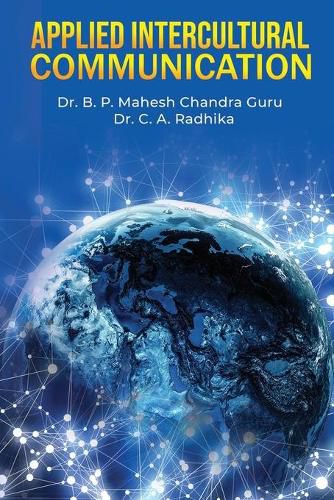Readings Newsletter
Become a Readings Member to make your shopping experience even easier.
Sign in or sign up for free!
You’re not far away from qualifying for FREE standard shipping within Australia
You’ve qualified for FREE standard shipping within Australia
The cart is loading…






This title is printed to order. This book may have been self-published. If so, we cannot guarantee the quality of the content. In the main most books will have gone through the editing process however some may not. We therefore suggest that you be aware of this before ordering this book. If in doubt check either the author or publisher’s details as we are unable to accept any returns unless they are faulty. Please contact us if you have any questions.
The world consists of several races, ethnicities and cultures which constitute diversity. Unity in diversity should be achieved in modern organizations and societies which are known for cultural pluralism. Intercultural communication is practiced across the globe vigorously to promote peace, harmony, collaboration and cooperation in all sectors of life. Modern corporate houses and other institutions of public service primarily depend on intercultural communication to cement communication gaps and promote mutually beneficial relationships. The corporate houses primarily practice intercultural communication to promote business interest on the basis of good human relationships. There are several stakeholders of intercultural communication in the organizational and social settings. The corporate leaders, executives and communicators are the key players in the process of intercultural communication.
They should also be aware of cultural differences and adapt their style of communication when meeting people from different cultural backgrounds. The subject of intercultural communication assumes great significance in the age of globalization both in Western and Eastern societies. The book serves the purpose of a comprehensive reference book on intercultural communication and meets the requirements of media scholars, cultural thinkers, inter-disciplinary researchers and students of mass communication and humanities.
$9.00 standard shipping within Australia
FREE standard shipping within Australia for orders over $100.00
Express & International shipping calculated at checkout
This title is printed to order. This book may have been self-published. If so, we cannot guarantee the quality of the content. In the main most books will have gone through the editing process however some may not. We therefore suggest that you be aware of this before ordering this book. If in doubt check either the author or publisher’s details as we are unable to accept any returns unless they are faulty. Please contact us if you have any questions.
The world consists of several races, ethnicities and cultures which constitute diversity. Unity in diversity should be achieved in modern organizations and societies which are known for cultural pluralism. Intercultural communication is practiced across the globe vigorously to promote peace, harmony, collaboration and cooperation in all sectors of life. Modern corporate houses and other institutions of public service primarily depend on intercultural communication to cement communication gaps and promote mutually beneficial relationships. The corporate houses primarily practice intercultural communication to promote business interest on the basis of good human relationships. There are several stakeholders of intercultural communication in the organizational and social settings. The corporate leaders, executives and communicators are the key players in the process of intercultural communication.
They should also be aware of cultural differences and adapt their style of communication when meeting people from different cultural backgrounds. The subject of intercultural communication assumes great significance in the age of globalization both in Western and Eastern societies. The book serves the purpose of a comprehensive reference book on intercultural communication and meets the requirements of media scholars, cultural thinkers, inter-disciplinary researchers and students of mass communication and humanities.